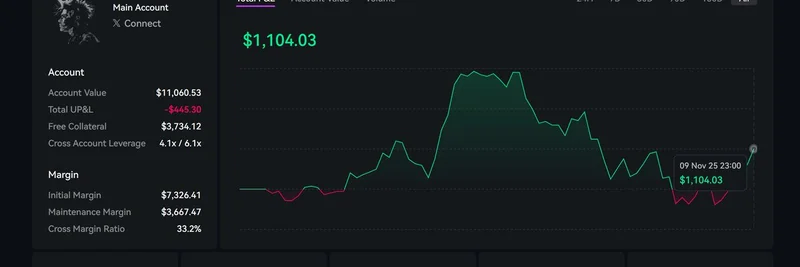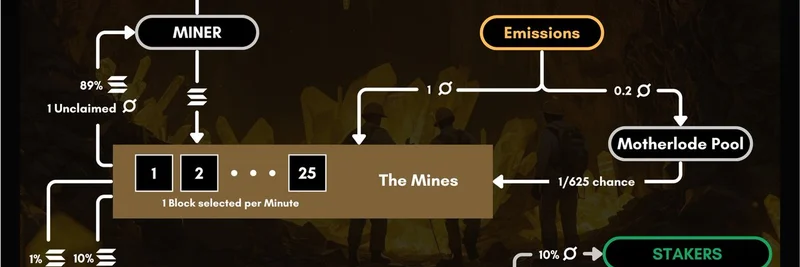If you've been scrolling through crypto Twitter lately, you might have caught this gem from BSCNews: a shoutout to Chainlink as one of the most impressive platforms in crypto history. They're spot on—Chainlink isn't just another token; it's the unsung hero connecting the dots between blockchains and the real world. As someone who's been deep in the crypto trenches, I'll break it down for you in simple terms, and we'll even touch on how it ties into the wild world of meme tokens.
What Exactly is Chainlink?
At its core, Chainlink is a decentralized oracle network. Now, if "oracle" sounds like something from a fantasy novel, think of it as a trustworthy messenger. Blockchains like Ethereum are super secure but they're isolated—they can't peek outside their own world to grab data like stock prices, weather updates, or sports scores. That's where Chainlink steps in. It fetches real-world info securely and feeds it into smart contracts, those self-executing bits of code that power everything from DeFi apps to NFT drops.
Chainlink acts like a bridge, making sure the data is accurate and tamper-proof by pulling from multiple sources. This prevents any single point of failure, which is a big deal in crypto where trust is everything. It's built on Ethereum but works across tons of blockchains, and it's open-source, meaning developers can tweak and build on it freely.
A Quick History Lesson on Chainlink
Chainlink kicked off in 2017 with a whitepaper from founders Sergey Nazarov, Steve Ellis, and Ari Juels. They spotted a huge gap: smart contracts needed external data but centralized oracles (the old-school messengers) were risky—easy to hack or manipulate. By 2019, Chainlink launched its mainnet, introducing a decentralized twist that aggregates data from independent nodes for better reliability.
Fast forward to 2024, and Chainlink's ecosystem has exploded. Over 2,100 projects rely on it, up from the previous year. It's not just hype; it's proven tech that's become a staple in crypto.
How Does Chainlink Actually Work?
Imagine a smart contract on Ethereum that needs the latest Bitcoin price to execute a trade. It sends a request to Chainlink's network of node operators—these are independent folks running the software. They grab the data from various APIs or sources, cross-check it, and agree on a single, verified value. This aggregated result gets delivered back to the blockchain.
Nodes stake LINK tokens as collateral, so if they mess up, they lose money. Users pay fees in LINK for these services, keeping the system incentivized. It's all about decentralization: no one entity controls the data flow, reducing risks like price manipulation that we've seen plague some DeFi protocols.
Standout Features of Chainlink
Chainlink packs some killer tools that make it indispensable:
- Decentralized Data Feeds: Real-time info on prices, events, and more, straight to your smart contracts.
- Verifiable Randomness Function (VRF): Need fair randomness for a meme token lottery or NFT mint? VRF ensures it's provably random and can't be gamed.
- Automation: Triggers actions based on conditions, like auto-selling a token if it hits a certain price.
- Cross-Chain Interoperability Protocol (CCIP): This is huge for meme tokens scattered across chains like Solana, BNB, or Ethereum. CCIP lets data and assets move seamlessly between them.
These features aren't just for big banks; they're perfect for meme projects. Think about a dog-themed token that uses weather data to trigger community events or randomness for giveaway winners.
Real-World Use Cases, Including Meme Token Twists
Chainlink shines in DeFi, where accurate price feeds prevent flash loan attacks and ensure fair lending. But let's zoom in on fun stuff:
- Gaming and NFTs: Meme tokens often tie into games or collectibles. Chainlink's randomness keeps things fair, like random trait generation for a Pepe frog NFT series.
- Prediction Markets: Bet on meme coin pumps or viral trends with verified outcomes.
- Supply Chain for Merch: Track real meme merch shipments transparently.
- Insurance for Holders: Parametric insurance that pays out if your fave meme token crashes due to market events.
Even beyond memes, it's used in insurance (auto-payouts for crop failures) and supply chains. For meme insiders, Chainlink could power cross-chain meme battles or aggregated sentiment data from social media.
Tokenomics: All About $LINK
$LINK is the fuel. Node operators earn it for providing data and stake it for security. There's a max supply of 1 billion tokens, with about 600 million circulating as of mid-2024. This setup creates a virtuous cycle: more usage means more demand for LINK, rewarding honest participants.
If you're into meme tokens, think of LINK as the utility king—unlike pure hype coins, it has real economic mechanics backing it.
Big Partnerships and What's Next
Chainlink isn't isolated; it's teamed up with heavyweights. Back in 2021, the Associated Press used it to deliver tamper-proof election and sports data. More recently, a collab with SWIFT (the global banking network) is bridging tradfi and crypto for tokenized assets.
Looking ahead, CCIP is game-changing. Launched in 2023 and expanded in 2024, it solves blockchain silos, letting meme tokens thrive across ecosystems. Projects like OpenUSDT use it for cross-chain stablecoins, boosting liquidity for everyone.
Why Chainlink Matters for Meme Token Fans
In the meme token space, where hype can fizzle fast, reliable tech like Chainlink adds substance. It enables smarter, safer projects—imagine a meme coin that auto-adjusts supply based on real-world events or integrates cross-chain voting for DAO decisions. As crypto evolves, Chainlink's role in making blockchains "smart" for real will only grow.
If this BSCNews tweet piqued your interest, head over to their full article here for even more deets. Stay tuned to Meme Insider for more breakdowns on how foundational tech like this powers your favorite memes. What's your take on $LINK—bullish or waiting for the next pump? Drop your thoughts below!



